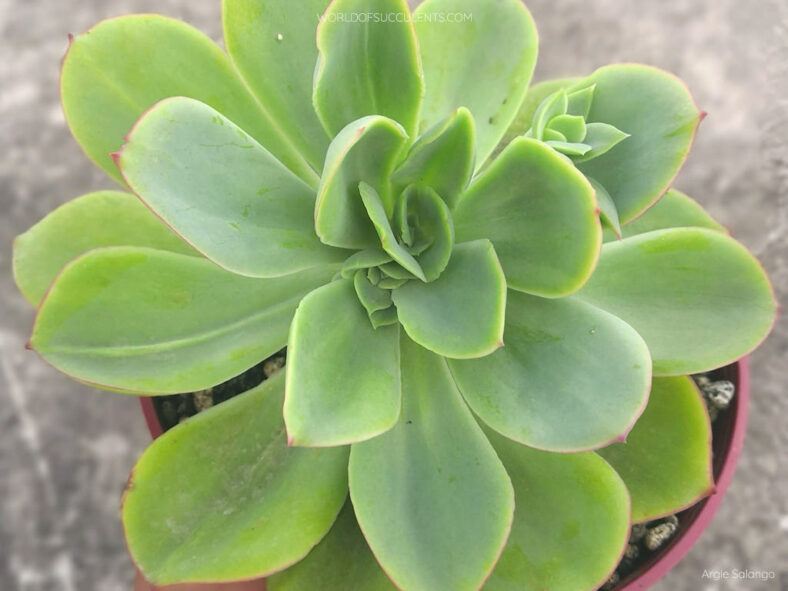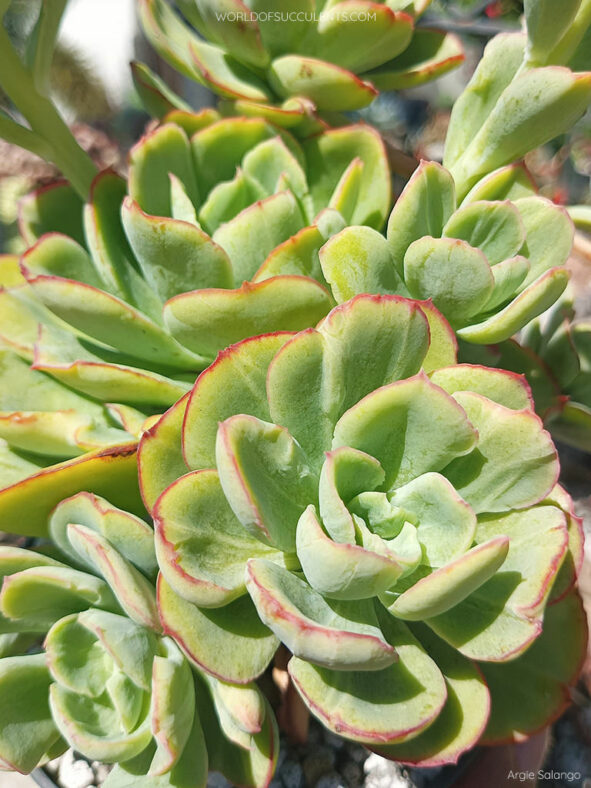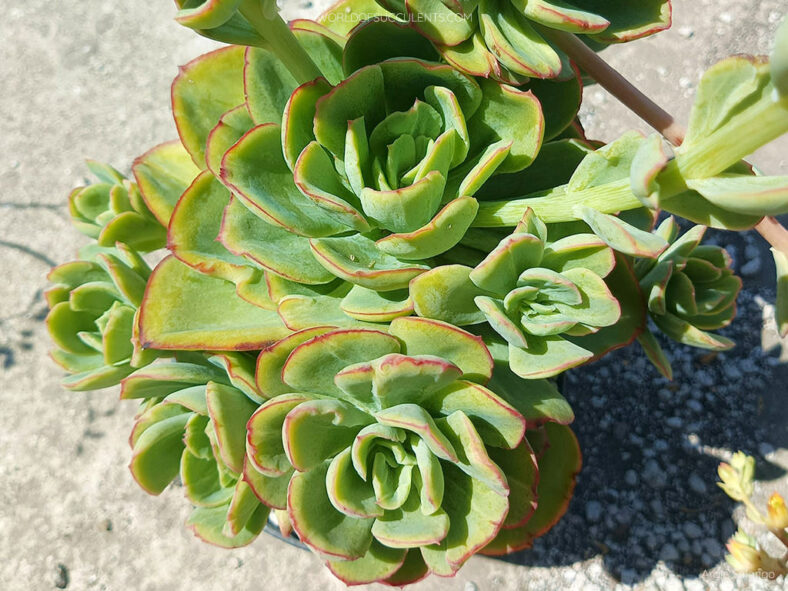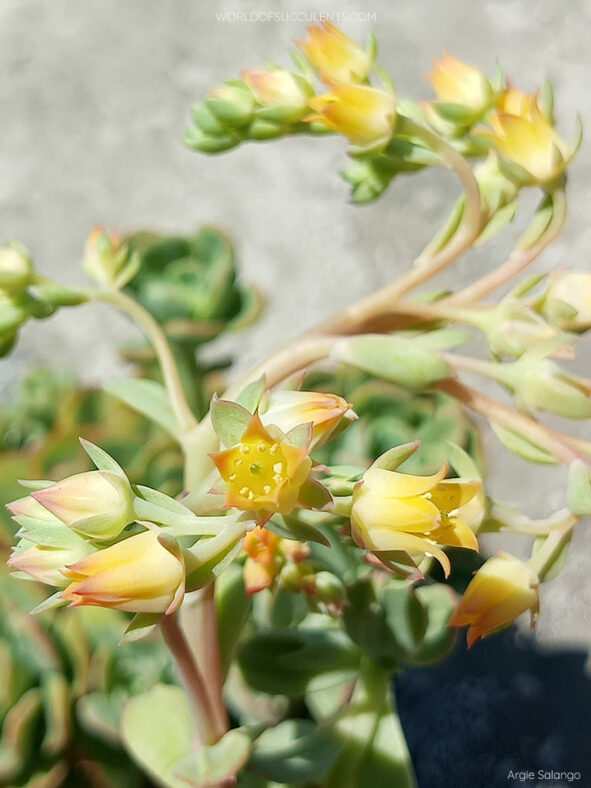Echeveria 'Lawrence' is a hybrid known as Echeveria 'Pallida Prince' in Korea. However, the hybrid name must not include the name of a species (Echeveria pallida), so it had to be renamed.
Scientific Name
Echeveria 'Lawrence'
Scientific Classification
Family: Crassulaceae
Subfamily: Sempervivoideae
Tribe: Sedeae
Genus: Echeveria
Origin
Echeveria 'Lawrence' is a hybrid of unknown origin. It results from a cross between Echeveria pallida and Echeveria pulidonis.
Description
Echeveria 'Lawrence' is a beautiful succulent with a branching stem and rosettes of broad, spoon-shaped leaves at the end of its branches. Initially simple, the stem produces numerous branches from below as it grows, which take root and form a cluster over time. The leaves are pale green to grayish-green and usually have red margins.
In spring, Echeveria 'Lawrence' produces bright yellow, bell-shaped flowers on stalks with branches that bend over their weight.

How to Grow and Care for Echeveria 'Lawrence'
Light: Echeveria 'Lawrence' requires full sun to partial shade for optimal growth. Therefore, place it near the brightest window in your home. In addition, if you are moving the plant outside in spring, do it gradually and avoid exposure to intense afternoon sun.
Soil: Having soil that drains quickly is most important for growing a healthy succulent. While many growers prefer to create their own soil mix, commercial soil mixes for succulents will work fine.
Temperature: High temperatures are not a problem as long as there is plenty of fresh air, but Echeveria 'Lawrence' is a tender succulent and must be brought indoors if there is a risk of freezing temperatures. It grows best in USDA Plant Hardiness Zones 10a to 11b, with average minimum winter temperatures ranging from 30 to 50 °F (-1.1 to 10 °C).
Watering: This plant prefers the "soak and dry" method during the growing season. Water deeply and then let the soil completely dry out before watering again. Water sparingly during the winter, only enough to keep the plant from shriveling. Above all, if you have a saucer under the pot, do not forget to empty the excess water.
Fertilizing: Although it can grow well without fertilizer, Echeveria 'Lawrence' may benefit from extra nutrients. Feed only during the growing season and use a water-soluble fertilizer diluted to half the recommended strength.
Repotting: If growing it in a container, repot as needed in spring or early summer, but ensure the soil is dry before you start. Also, always use a container with drainage holes.
Propagation: Echeveria 'Lawrence' can be propagated by leaves or stem cuttings during the growing season.
Learn more at How to Grow and Care for Echeveria.
Toxicity of Echeveria 'Lawrence'
Echeveria 'Lawrence' has no reported toxic effects and is safe for growing around children and pets.
Links
- Back to genus Echeveria
- Succupedia: Browse succulents by Scientific Name, Common Name, Genus, Family, USDA Hardiness Zone, Origin, or cacti by Genus
Photo Gallery
Click on a photo to see a larger version.


